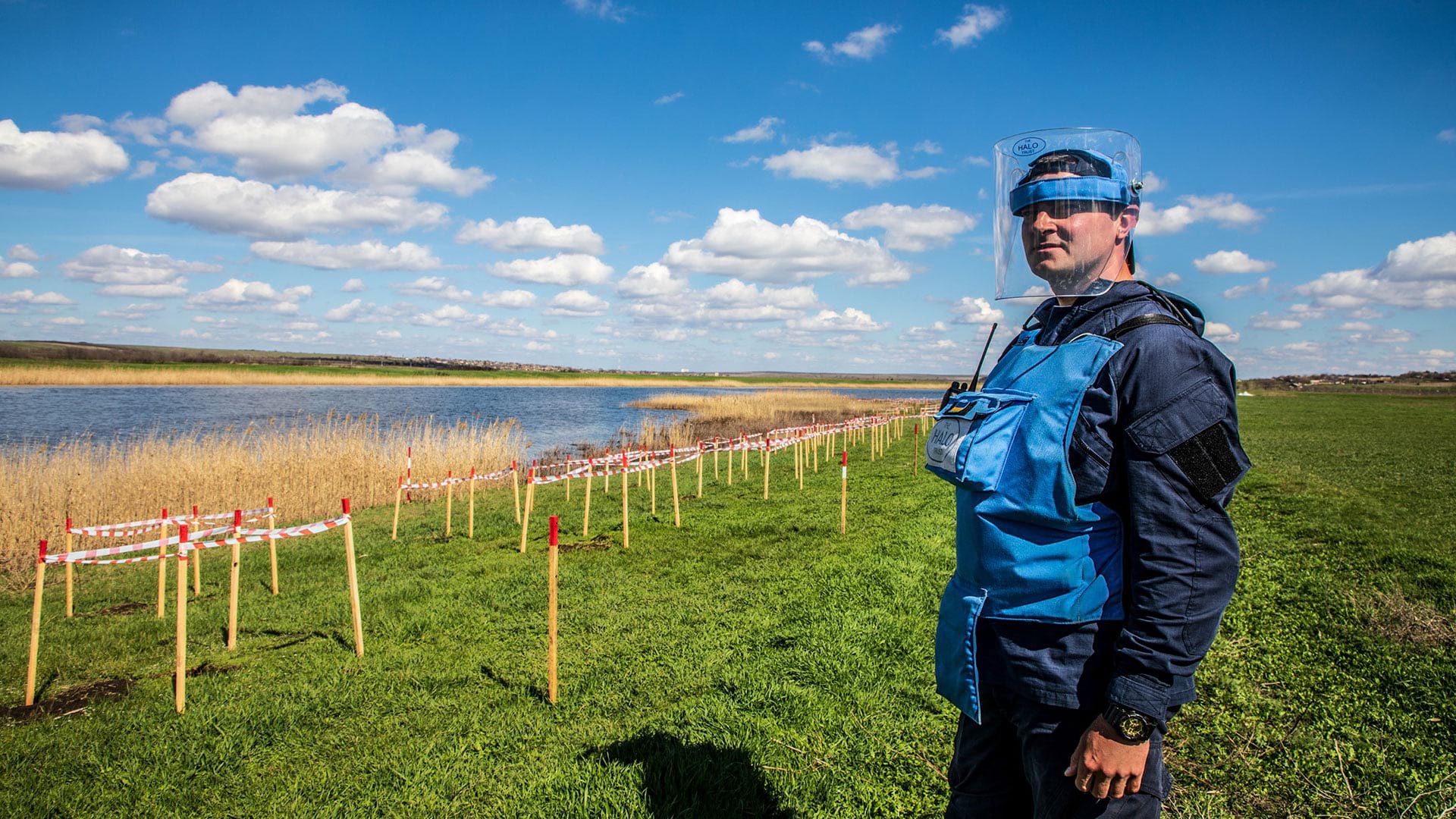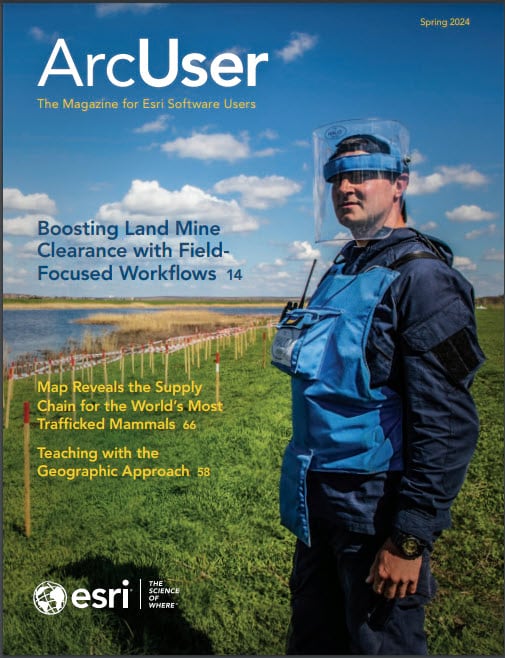Esri Launches Maps.com
In January 2024, Esri officially launched Maps.com, a website for showcasing and celebrating beautiful, remarkable, and insightful maps. The site, accessible to anyone online, is focused on sharing and discussing visually enngaging maps across a wide variety of topics and formats including analyses, dynamic visualizations, videos, and 3D models.å The Maps.com editors encourage mapmakers, cartographers, and the GIS community to submit their own distinctive and visually engaging maps. The maps featured so far have included a 3D view of Mars, a look at where Christmas trees grow in the United States, and a cross section of an active volcano. Submit a map for consideration.
.

Esri Chief Scientist Selected as 2024 US Science Envoy
The US Department of State has selected Esri chief scientist Dr. Dawn Wright to be one of four distinguished scientists to serve as a new envoy in the US Science Envoy Program in 2024. Through the program, eminent scientists and engineers help inform the Department of State, other US government agencies, and the scientific community about opportunities for science and technology cooperation. Wright joins fellow cohort members Dr. Rumman Chowdhury, Dr. Stephanie “Steffi” Diem, and Dr. Sian Proctor as a member of the first all-female cohort in the history of the US Science Envoy Program.
Wright has written and contributed to some of the most definitive literature on marine GIS technology. She is an elected member of the National Academy of Sciences, the National Academy of Engineering, and the American Academy of Arts & Sciences. In 2022, she served as mission specialist for a historic descent into the deepest known point in Earth’s ocean. Learn more about how Wright and Esri work to advance science using technology.

Uncover the Earth’s Secrets with Landsat Explorer App
Esri developed the Landsat Explorer app in ArcGIS Living Atlas of the World to increase Landsat data accessibility. Users, regardless of the level of their expertise, can easily explore more than 50 years of Landsat data to gain a deeper understanding of landscape features through access to multispectral data that captures wavelengths beyond the narrow band of visible light that humans can perceive.
The Landsat program began with the launch of its first satellite, Landsat 1 in 1972 as part of joint program of the National Aeronautics and Space Administration (NASA) and the United States Geological Survey. In the intervening years, Landsat collected a treasure trove of data on the Earth’s surface that is invaluable because of its consistency.
The Landsat Explorer app in ArcGIS Living Atlas is a dynamic gateway that lets users explore a range of data layers, maps, and apps. Landsat Level-2 data from as early as 1982 is a dynamic time series of imagery available across the ArcGIS system and is used to power Landsat Explorer. The app leverages ArcGIS capabilities to explore information contained in Landsat data. From urban expansion to the shrinking of lakes, the app makes the Landsat data accessible and captivating.
An R package for ArcGIS Location Services
Esri has released {arcgis}, an open-source metapackage that facilitates interacting with ArcGIS location services from R. R-ArcGIS Bridge enables easy access to ArcGIS data and brings it into the R language for specialized analysis. With {arcgis}, ArcGIS users can access, modify, and publish web-based data from the R in the development environment of their choice.
This new addition to the R-ArcGIS Bridge complements the existing {arcgisbinding} package, which bridges R and ArcGIS Pro, by providing new ways for users to combine the powers of data science and statistical R packages with ArcGIS analytical, visualization, and data hosting capabilities. The {arcgis} metapackage provides a single point of access for users to install and load the associated packages.
Together, these packages enable data scientists, analysts, and developers to integrate the capabilities of R and ArcGIS for workflows and applications that use web-based services. Behind the scenes, {arcgis} achieves this by interacting with ArcGIS REST API endpoints. Learn more.

